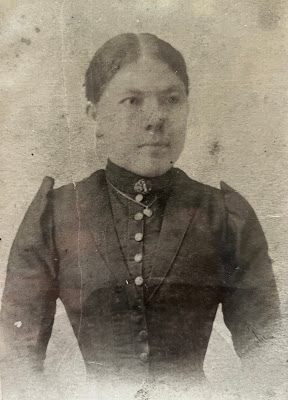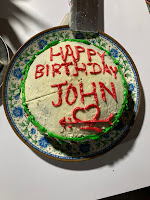Since my first journey to Nepal in 1989, I have been drawn back to what was then the Hindu Kingdom of Nepal, and after painful political upheaval, now the Federal Democratic Republic of Nepal - at least a half dozen times. The charming and remote Himalayan villages, the cacophony of Thamel in Kathmandu, the unabashed display of spirituality, including a seamless interweave of Buddhism and Hinduism, the children greeting you with choruses of Namastes - each one a prayer recognizing our inherent divinity - the magic of this land continues to warmly embrace me.
As I live in Vancouver, I reside at sea level. Consequently, even though I am familiar with the signs of AMS - acute mountain sickness - I always experience some pre-departure anxiety around this topic. I obsessively review the altitude at which symptoms are to first appear (2,500 meters above sea level is the usual threshold) and check whether my Diamox tablets have expired or not - which I take with me like some sort of pharmacologic rabbit's foot, as I haven't had to use them in years. This is all part of my pre-trip ritual, like packing and unpacking a thousand times in an attempt to shave off a gram or two in my luggage.

Arriving in Kathmandu after a far too long flight always thrills me. The city has of course grown over the years. Some of the changes are positive. The redevelopment after the catastrophic 2015 earthquake is impressive. The artful reconstruction of ancient temples flattened by that horrific disaster is a joy to behold. The increased traffic congestion and accompanying pollution is obviously far less pleasant. Here I confront one of many inescapable challenges and paradoxes facing the contemporary traveller to Nepal. While many longtime Western adventurers to Nepal bemoan the gradual urbanization of the country, complaining for example that development of roadways detracts from the traditional tranquility of some trekking routes, I find it selfish, disrespectful and smacking of a type of "tourist colonialism". Why in the world should children residing in remote mountain villages have to continue to walk for half a day to go to school so one can have an "authentic trekking experience"?

The challenge is not to purposefully bypass modernity, but to ensure that the precious and unique culture, aesthetic and history of Nepal is preserved while not erasing and replacing it with a quick, uninspired project that lacks soul and integrity.
The itinerary this time was the Tamang Heritage and Langtang Valley Trek. The combining of these two separate trekking routes makes for a wonderful two week excursion. Tamang is next to the Langtang Valley. Tamang is a Tibetan Buddhist region. Walking amidst traditional villages is a richly rewarding experience. As in other parts of Nepal that I have visited, the Tamang people are very hospitable, gracious and kind. The views of the Langtang and Ganesh mountain ranges are spectacular.

The Langtang Valley was heavily impacted by the enormous 2015 earthquake. The village of Langtang was entirely obliterated for example. Hundreds of lives were lost amidst the disaster. Over the ensuing years, villages have been beautifully reconstructed and the return of trekkers has provided income useful to further the reconstruction. Walking amidst the mind-bendingly beautiful landscape and chatting with friendly villagers, I couldn't help but wonder how much of the psychological trauma continued to reverberate in the people's consciousness. I hope that our return to their valley helped in some small way to soften that pain.
 On a much lighter tone - the Snickers momos were an amazingly delicious and creative way to recharge after a demanding day of trekking.
On a much lighter tone - the Snickers momos were an amazingly delicious and creative way to recharge after a demanding day of trekking.

One of the most memorable experiences was to spend my birthday in the Tamang village of Thuman. Participating in devotional chanting (and occasionally sipping yak butter tea and later chang - fermented barley wine) at one of the ancient Buddhist monasteries was an unexpectedly blessed and enormously meaningful birthday gift. Suddenly my notion that all travel is a pilgrimage was again crystallized.
I felt an unmistakable sense of connectedness to all which was present; there in that welcoming sacred space - and beyond.
As I didn't wish to draw attention to myself, I refrained from mentioning my upcoming birthday to my travel companions. Nevertheless, our guide gleaned this information from our passports and later that evening, in the small, family-run guesthouse, our small group of intrepid travellers secretly arranged a surprise birthday party for me. A wonderful and happy culmination of my birthday in Nepal.

The village of Kyanjin Gompa was the final destination of the Langtang Valley Trek. I did not sleep much the night prior to that last day. Anticipating the early morning 4:30 departure in total darkness to greet the rising sun at Kyanjin Ri (Nepali for "peak"; elevation 4,400 meters and a 600 meter ascent) made for a fitful night. The effort was of course well worth it. The view was spectacular. Our supportive banter motivated one another over the rougher patches and the camaraderie deepened with each breathless, slow step.

Back in the village later that afternoon, I notice a lady working at - well I'm not quite sure what she is doing. She continually empties basins filled with crystals while white particles flutter away. A beautiful and enigmatic image. I am curious and smile. She returns the smile and thus I approach her. Before I know it, I join her in her task. Two hours working together ensue and we have cleared all the sacks of salt crystals from the tiny pieces of material that have gotten loose from the bags containing the salt. The bags of salt were transported by donkeys to Kyanjin Gompa village to be used to supplement the diet of local, domesticated yaks. The technique was to empty the sacks of salt crystals into the basin which then are poured out to the ground. As the large, heavy salt crystals fall onto a tarp, the wind carries away the lighter fabric that had broken off from the sacks during the transport by donkey caravan.
After completing the job, she thanked me for my assistance with a lovely smile while gently caressing my cheek. Beckoning me to her very simple home nearby, she gave me four small roasted potatoes. A precious, serendipitous encounter winds down. Another unexpected gift from Nepal that will stay with me long after I leave.

Returning to the Kathmnadu Valley, I take a few more photographs before I start my long journey home. The magic of Nepal will likely draw me back into her embrace. Hope it'll be soon.
Namaste.
































